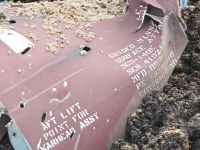US Defense Secretary Donald Rumsfeld was to travel to the Middle East Tuesday to consult with regional leaders on the US military's response to the September 11 terror attacks on New York and Washington, the Pentagon said.
Rumsfeld's exact destination was not announced.
The trip comes as the US military presence in southwest Asia has swollen to about 30,000 personnel over the past two weeks, Pentagon spokeswoman Victoria Clarke said.
In addition, two aircraft carrier battle groups, an amphibious assault force and about 350 military aircraft are now in the region, she said.
The spokeswoman, who was unable to say where Rumsfeld was going, said the secretary's agenda was still being worked out only hours before his scheduled departure Tuesday evening from Andrews Air Force Base in Maryland.
Before leaving, Rumsfeld was to meet at the Pentagon with Indian Defense and External Affairs Minister Jaswant Singh.
President George W. Bush decided to send Rumsfeld on the mission because "we do want to have consultations about the defense arrangements," Clarke said.
"We want to make sure we have the consultations at the highest level," she said. "We need to make sure we underscore the importance we place on countries of the region."
The United States has had an extensive military presence in the Gulf since the end of the 1991 Gulf war, but Saudi Arabia and other states in the region have been reluctant in the past to allow the use of their territory for offensive military operations.
Pressure on Afghanistan hit a new level Tuesday as British Prime Minister Tony Blair warned Taliban leaders in Afghanistan to "surrender the terrorists or surrender power."
The Taliban has refused to yield to US demands that Saudi exile Osama bin Laden and his lieutenants in the Al Qaeda network be handed over to Washington, setting the stage for a military confrontation.
Top administration officials also have left open the possibility that future phases of the campaign could take on Iraq despite statements by Jordan's King Abdullah that he had received assurances that no Arab country would be attacked.
Clarke said the focus should not be just on bin Laden and the Al Qaeda network in Afghanistan.
"This is not about the center of power. This is about draining the swamp. This about eliminating the support, getting rid of all those entities that support terrorism and allow its continuance," she said.
Besides the US forces now in the region, the aircraft carrier USS Kitty Hawk was steaming from its homeport in Yokosuka, Japan in support of Operation Enduring Freedom.
The carrier departed without a naval escort or its airwing, which raised the possibility that it could be used as a platform to stage a helicopter-borne assault force.
General Henry Shelton, chairman of the Joint Chiefs of Staff until his retirement Monday, made just such an innovative use of a carrier in deploying army assault forces for an invasion of Haiti.
The country's generals surrendered just before the invasion was launched, allowing for the forces' unopposed entry.
The amphibious ready group in the region, which includes an amphibious assault ship, also would have about 2,200 combat ready marines aboard.
A fourth carrier, the USS Theodore Roosevelt, was in the Mediterranean exercising with Egyptian forces. Its original deployment plans called for a six month cruise through the Mediterranean and the Gulf.
The Pentagon also has deployed B-52 and B-1 bombers from US bases to points in the region along with surveillance, reconnaissance and support aircraft.
The US naval fleets in the region include guided missile cruisers, guided missile destroyers and submarines capable of firing Tomahawk cruise missiles, an effective weapons for precision strikes on fixed targets over long distances.
The B-52 bombers, which normally stage in the Indian Ocean island of Diego Garcia, are equipped to fire air launched cruise missiles, whereas the B-1 bombers can carry a payload of satellite-guided glide bombs -- WASHINGTON (AFP)
© 2001 Al Bawaba (www.albawaba.com)








